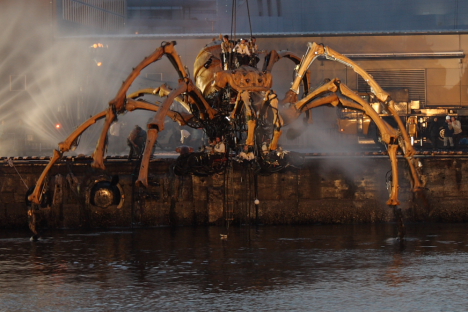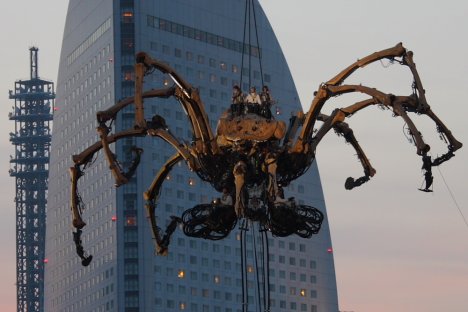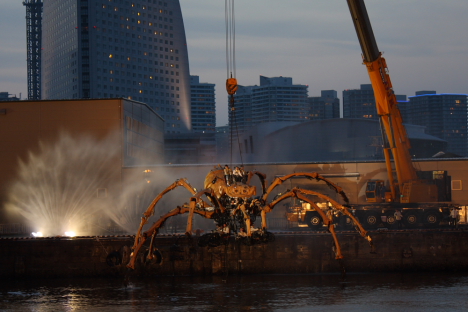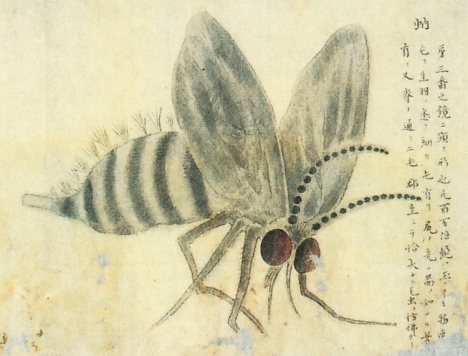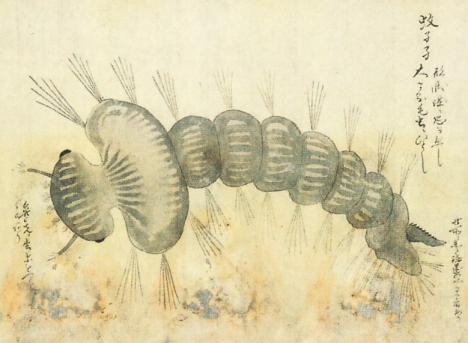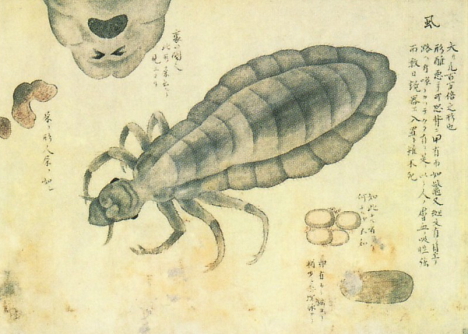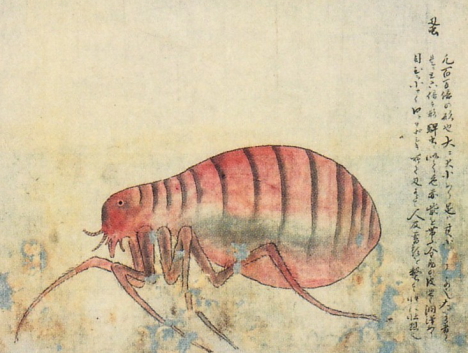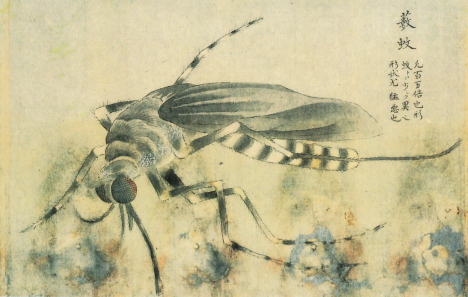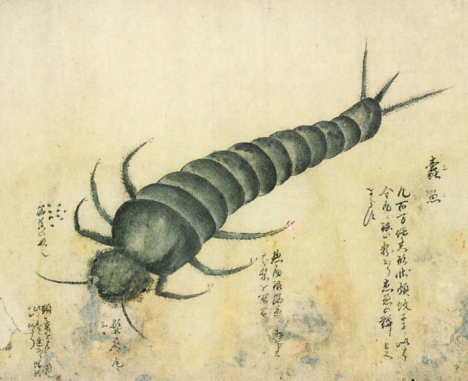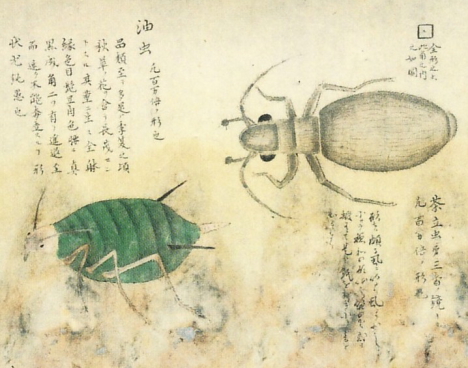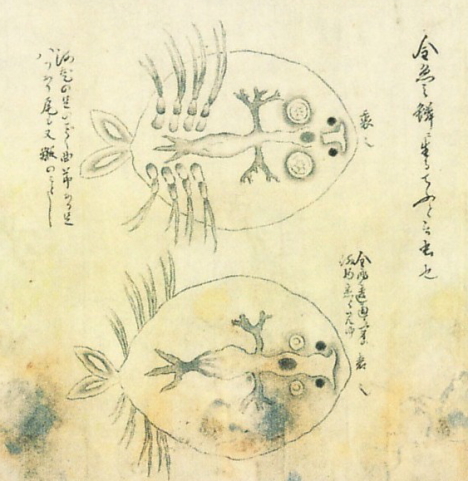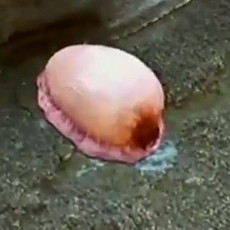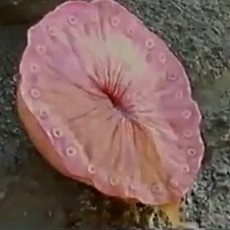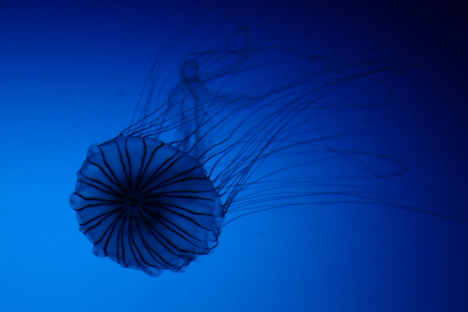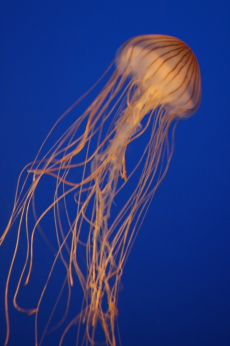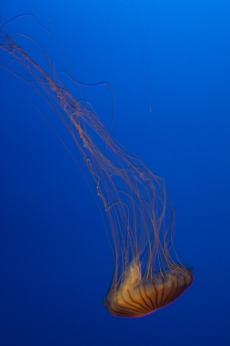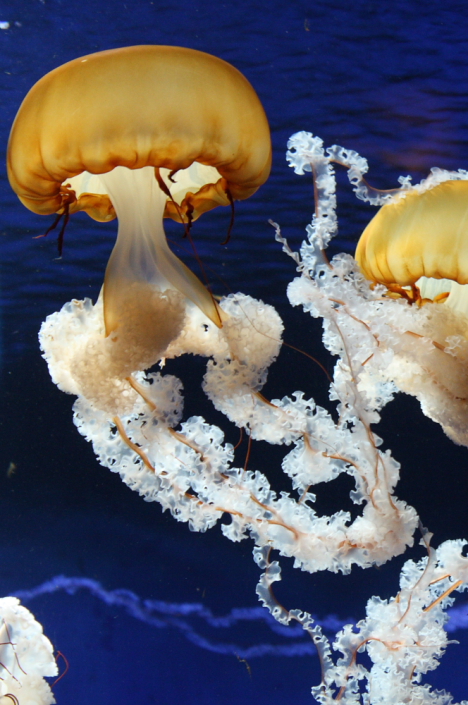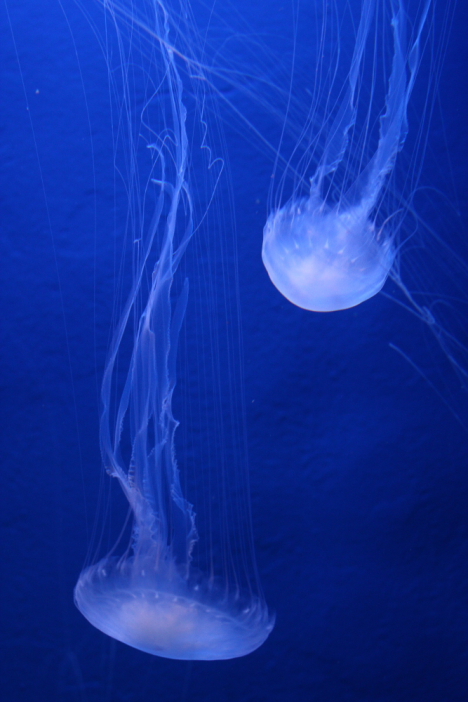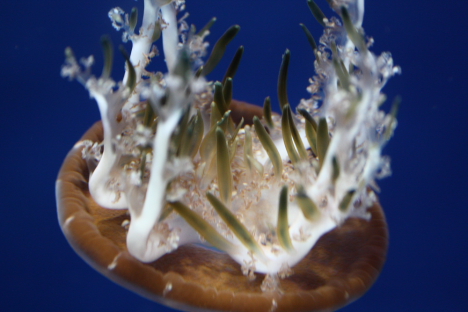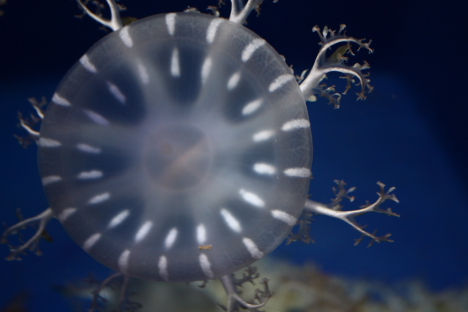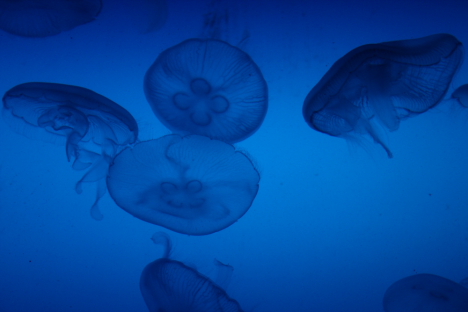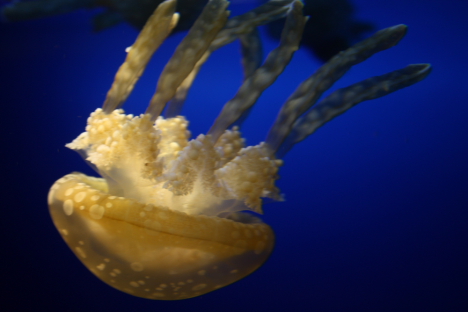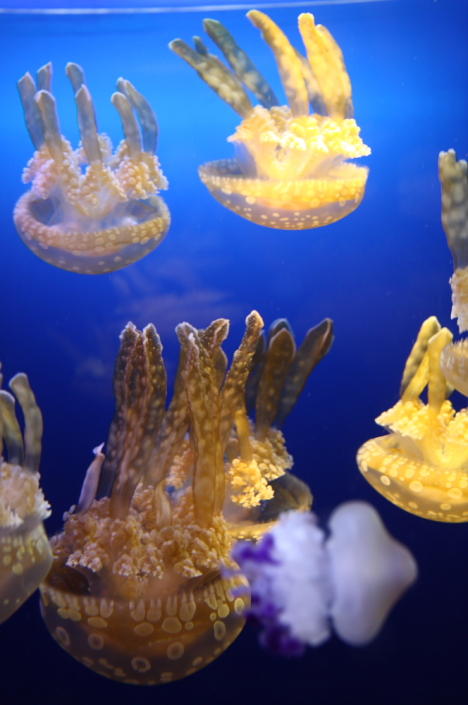
Tadpole rain, Hiroshima prefecture, June 15
Over the past few weeks, people in Japan have been witnessing tadpoles, fish and frogs fall from the sky. Ever since the strange phenomenon was first observed in Ishikawa prefecture on June 4, reports of animal rain have been pouring in from prefectures across the country.
So far, nobody has come up with a plausible explanation for the animal rain. Although some people believe the tadpole showers may be the result of weather disturbances such as waterspouts, no meteorological agencies have observed strong wind or unstable weather conditions in any of the areas where the rain has occurred. Others believe birds may be spitting up large quantities of tadpoles, although many ornithologists dispute this claim. Still others have suggested it may be the work of human pranksters, or even extraterrestrials.
Here is a brief timeline of the occurrences reported so far. This page will be updated as new reports emerge.
* * * * *
June 4, Ishikawa prefecture -- At 4:30 PM in the town of Nanao, witnesses discovered approximately 100 dead tadpoles in a 300 square meter area in and around the parking lot outside the Nakajima Civic Center. Witnesses described hearing a strange sound outside before finding the tadpoles.

Tadpoles on car windshield, Ishikawa prefecture, June 4
June 6, Ishikawa prefecture -- At 7:00 AM in the town of Hakusan, a 75-year-old resident found a handful of tadpole carcasses on the hood of her car. More were found scattered in nearby yards and parking lots.
June 9, Ishikawa prefecture -- In the town of Nakanoto, a number of small fish were found scattered over a residential area. About 10 fish recovered from roadsides and the tops of cars appeared to be Crucian carp measuring 3 to 5 centimeters long.


Crucian carp, Ishikawa prefecture, June 9
June 13, Iwate prefecture -- At about 6:00 PM in the town of Shiwa, a 67-year-old farmer was tending her field when she heard what sounded like hailstones hitting the ground around her. She found 15 tadpole carcasses. The local meteorological agency reported the weather was calm at the time, and a local ornithologist said he found it improbable that birds dropped them.
June 15, Nagano prefecture -- In the morning, about 40 tadpole carcasses were found on the premises of an elementary school in the town of Suzaka.
June 15, Hiroshima prefecture -- At 8:30 AM in the town of Miyoshi, a 60-year-old resident found the carcasses of 13 tadpoles and one frog scattered in the yard and on the roof of her home. (See photo above.)
June 15, Miyagi prefecture -- At about 5:00 PM in the town of Taiwa, a 74-year-old resident heard what sounded like rain outside her home. She stepped outside to find about 50 tadpoles scattered in the yard and on the roof. The tadpoles were wet, but none of them were alive. According to the woman, the sky was clear and there was no wind. She saw no birds in the sky.
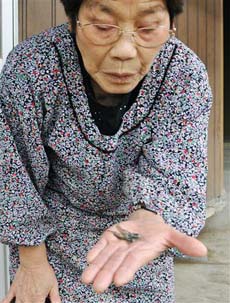

Left: Miyagi prefecture, June 15 // Right: Iwate prefecture, June 17
June 16, Aichi prefecture -- At around 8:00 AM, a 45-year-old company employee was driving through the town of Chiryu on his way to work, when he heard the sound of something pelting the roof of his car. When he arrived at work, he found 25 tadpole carcasses, each about 5 centimeters long, splattered on the top and sides of his vehicle.

Aichi prefecture, June 16
Some of the tadpoles were bloody and looked as if they had fallen from a great height. According to the man, there were no tall buildings nearby and the sky was clear. "At first I though birds had crapped on my car," he said. "I was surprised to find tadpoles."
June 16, Saitama prefecture -- At 1:00 PM in the town of Kuki, a 77-year-old man reportedly found over 20 carcasses of tadpoles and small fish in his yard. The man lives about 1 kilometer away from a patch of woods where crows roost. He believes the birds dropped the tadpoles and fish in his yard.

Saitama prefecture, June 16
June 16, Miyagi prefecture -- At around 4:00 PM in the town of Osaki, a 54-year-old resident reportedly found about 20 carcasses of tadpoles and small fish in her yard.
June 17, Iwate prefecture -- At 5:00 AM, while walking to his rice field, a 66-year-old farmer in the town of Yahaba heard what sounded like large raindrops hitting the ground around him. He found about 30 tadpole carcasses, each about 3 to 4 centimeters long, on the road. Most of them appeared crushed, as if they had fallen a great distance. He spotted a crow flying in the sky above, but he doubts the bird dropped the tadpoles. He said there was no wind at the time. (See photo above.)
June 17, Fukui prefecture -- A 67-year-old resident of the town of Sabae found about 40 tadpole carcasses outside her home in the morning. The tadpoles, which measured about 3 to 4 centimeters long, were moist. Some of them were crushed and bleeding. The weather had been fine, and the woman reportedly heard nothing strange the night before.

Fukui prefecture, June 17
June 17, Toyama prefecture -- At 8:40 AM in the town of Asahi, a 59-year-old company worker found about 30 tadpoles scattered on the road in front of his home. The tadpoles measured about 3 centimeters long and had begun to develop legs. The weather was calm and partly cloudy, making it unlikely they were swept up in a gust of wind. A local biologist says that the tadpoles may have died from dehydration after venturing out from a nearby rice field. The man believes they may have been dropped by crows.

Toyama prefecture, June 17
June 17, Akita prefecture -- At 10:30 AM in the town of Ugo, a 37-year-old candy shop manager found about 70 tadpole carcasses in yards and on the streets near her store. Most of the tadpoles, which measured about 2 to 3 centimeters long, appeared crushed. The shop is located in a residential area near rice fields and a river. She blames birds.

Akita prefecture, June 17
June 17, Kagoshima prefecture -- While taking an evening walk, a 58-year-old company employee in the town of Isa came across about 20 tadpole carcasses in the street. According to the man, there were rice paddies nearby, but the road was dry.
* * * * *
Saitama prefecture, late May -- In a loosely related story, an employee at a nursing home in the town of Sakado found a mummified snake on a wooden deck outside the facility one morning. The mummy, which measures about 30 centimeters long and appears to be the dried remains of a baby Japanese striped snake or Japanese rat snake, is coiled up in a strike pose.

Mysterious mummified snake, Saitama prefecture
It is unclear where the snake came from and how it made its way to the nursing home, although it appears to have fallen from the sky (perhaps it was dropped by a bird). The employee, who believes the unusual find is a sign of good luck, put the snake mummy on display in a glass case in the lobby. However, he was forced to remove it after some residents complained.
* * * * *
June 17, Niigata prefecture -- In the city of Niigata, a 14-year-old student returning home from school in the evening found 25 dead tadpoles on a residential street, not far from an irrigation channel and rice fields. The carcasses, which were dry and flat, measured 2 to 5 centimeters long.


Left: Tadpole rain in Niigata (June 17) // Right: Tottori (June 18)
June 18, Tottori prefecture -- Early in the morning in the town of Yonago, a 48-year-old resident found 30 tadpole carcasses scattered atop a section of a 5-meter-wide seaside retaining wall. The tadpoles, some of which had begun to develop legs, measured 2 to 4 centimeters long. According to the local weather agency, the maximum wind speed at the time was 3 meters/sec (6.7 mph) and conditions were not favorable for the development of waterspouts. A local biologist claimed it was unlikely that a bird scattered that many tadpoles along the wall.
June 18, Niigata prefecture -- At around 2:00 PM, a 63-year-old resident of the town of Nagaoka found about 50 carcasses of tadpoles, frogs, dragonfly nymphs and small fish in the street in front of his apartment building. The tadpoles were described as being in a half-dried state. One tadpole was also found on the roof of the apartment building, which is located in the center of town.
* * * * *
June 23, Fukushima prefecture -- At 10:30 AM on a clear, windless morning in the town of Aizu-Wakamatsu, two bicycle shop employees heard a loud thud outside their store. When they stepped out to investigate, they found a 35-centimeter-long catfish on the ground next to a parked minivan. The catfish appeared to have struck the vehicle, leaving a smear of mucus and mud on its left-hand side. The witnesses, whose shop is located nowhere near a catfish-populated river, do not believe it is the work of a human prankster. They suspect a bird may have dropped the catfish.
* * * * *
June 24, Yamaguchi prefecture -- At 6:00 AM, a 68-year-old resident of the town of Shunan heard the sound of something striking the roof of her home. When she stepped outside to investigate, she found about 20 wet tadpole carcasses on the ground and on the roof. The tadpoles each measured 3 to 4 centimeters long and were beginning to develop legs.
June 24, Yamagata prefecture -- At 4:30 PM, a 34-year-old piano instructor in the town of Shinjo discovered about 40 wet tadpole carcasses in her yard, just as she was leaving to walk her dog. The woman noticed the tadpoles after the dog started sniffing excitedly at the ground outside. She found a wet tadpole stuck to the dog's nose. The tadpoles, many of which appeared crushed, had not been in her yard two hours earlier.


Left: Yamaguchi prefecture, June 24 // Right: Aomori prefecture, July 1
July 1, Aomori prefecture -- A 29-year-old resident of the town of Rokunohe found about 40 tadpole carcasses scattered in the parking lot next to her apartment building. The tadpoles measured 2 to 5 centimeters long, and many of them appeared squashed. Several more were later found on the roof of the building.
* * * * *

Froglets scattered on rural road, Oita prefecture, July 7
July 7, Oita prefecture -- The bodies of more than 600 tadpoles and froglets were found scattered along a 100-meter stretch of rural road near the town of Kusu. A 69-year-old farmer discovered the carcasses while on the way to check his rice fields in the morning. According to the farmer, who noticed nothing unusual on the road the night before, the irrigation channels and rice paddies near the road contain no water, implying that the froglets may have come from elsewhere.
[Compiled from multiple sources via Google News]
* Last update: July 9, 2009. More updates to follow.



